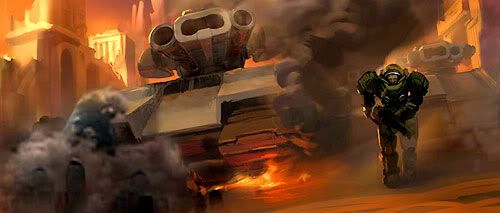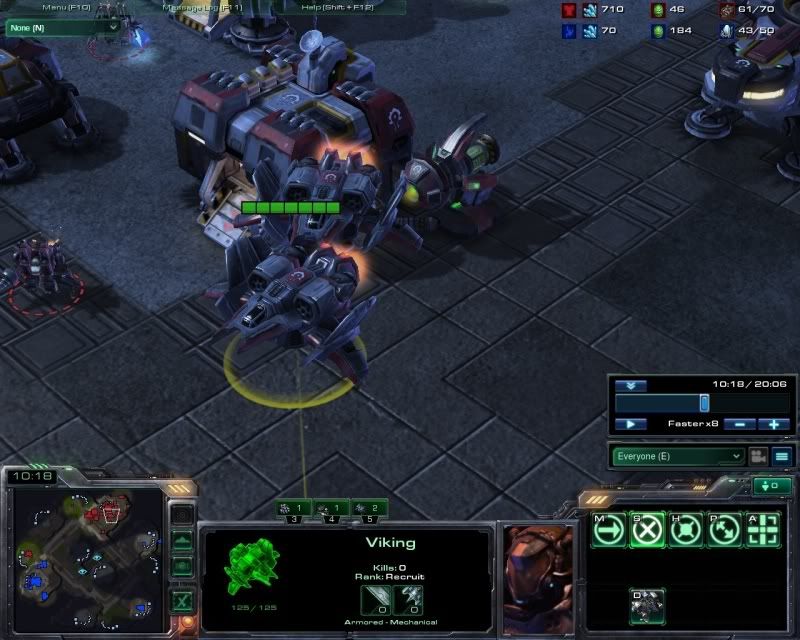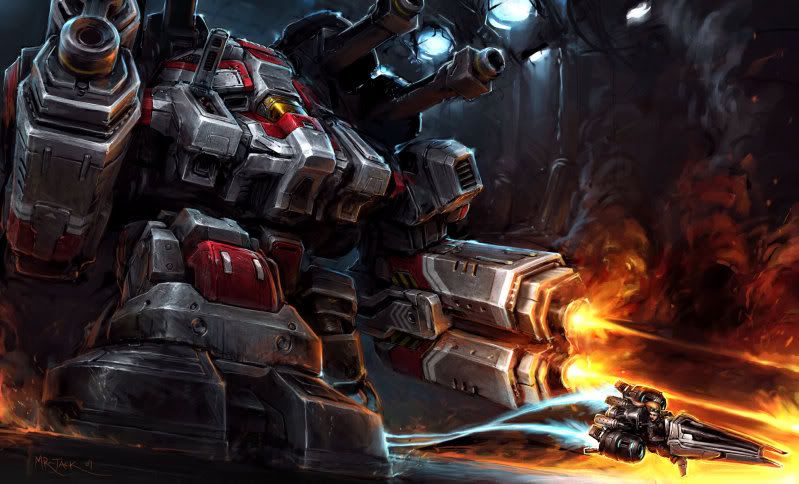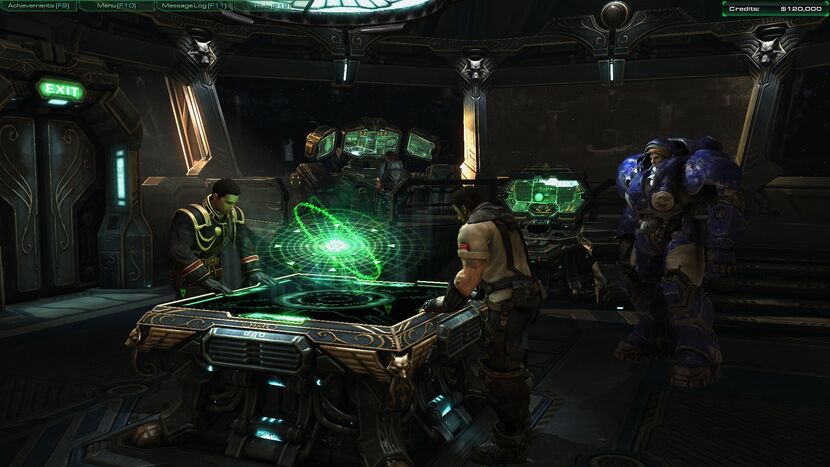First contact with the Protoss. Better think fast.
Yesterday’s Extra Credits discussed depth & complexity in games. When discussing complexity, James asks the question “How many mental calculations per second are you asking of your player?” He then goes on to posit that turn-based strategy games are no more complex than first-person shooters, based on the number and types of decisions a player must make based on the pace of play. But turn-based isn’t the only kind of strategy game out there. When considering the degree of challenge presented by a game based on strategic, overarching decision-making, the speed at which the game progresses is very important.
When I think turn-based strategy, I think Civilization. It’s the 4X game I grew up with and, while I miss Master of Orion, the latest iteration is very polished and well-presented. As all of your decisions are done on your turn, and no time limit is imposed on those turns, the pace of play is very leisurely. While you are making complicated choices, especially as you develop more technologies and expand your empire, you are under no temporal pressure to come to a conclusion. You have all the time in the world, and that makes a game of Civ truly relaxing, if incredibly time-consuming.
Some games present the choices of the player in relative real time but mitigate the pace with the use of a pause function. So it is with FTL. Weapons fire and teleporters activate just as soon as their cooldowns make them available, which can lead to some intensity, especially when you have multiple hull breaches and you have Mantis invaders chewing on your crew. But you can hit the Pause button at any time, catch your breath, and consider the situation from a broad perspective. This reduces the immediate burden on your brain and mitigates the pressure, thus making decision-making a bit easier and reducing what appears to be a daunting amount of complexity.
Online games do not afford the luxury of a pause function. Time manipulation in the real world would be a titanic advantage, but chronomancy is unfortunately restricted to speculative fiction. However, team-based play like that in League of Legends tends to take the burden off of the individual player. Ideally, five brains are better than one, and being able to at least discuss the situation at hand if not develop a plan of attack based on that information lessens the cognitive burden on the individual. The pace is still fast and some decisions will need to be made immediately without help from the team, but that ‘safety net’ is still there.
And then you have solo real-time strategy experiences like StarCraft 2. While a team mode does exist for the game, the play that earns the most attention, accolades, and money is the one-on-one experience. You can strategize and theorycraft until the exploding sheep come home, but when the game begins, all of your decisions need to be made immediately. You must process information on the fly, while carrying out your own plans. You must both out-smart and out-play your opponent, even if you’re going for a held-back strategy that works from the angle of base expansion, defense, area control, and technological upgrades as opposed to, say, a cannon rush.
Yet the decisions you have to make in a game of StarCraft – unit composition, the approach to the objective, examination of opponent’s weaknesses to exploit – are not that different from those in Civilization. They simply need to happen more quickly, and while this may make the game seem more complex, I dare say it really isn’t. The complexity of the decisions is magnified by the pace of play, but taken on their own the decisions themselves are not that difficult. It is, however, difficult to make a solid decision in a very limited span of time, and still have the confidence to know it was the right one to make (see also The Walking Dead).
This is both the challenge and the appeal of strategy. No matter what the pace of play might be, the brain is fully engaged in making decisions and carrying out strategies. Playing well is definitely more a case of mind over matter, and I for one am a huge fan of thinking your way out of a difficult position.






